Recovering Sodium Hydroxide Process from Tungsten Smelting
- Details
- Category: Tungsten Information
- Published on Monday, 11 November 2019 09:59
- Hits: 1714

With the continuous exploitation of tungsten resources, scheelite and medium ores with high impurity content become the main sources of tungsten smelting raw materials. In the existing technology, the smelting of Scheelite Concentrate and medium ore generally adopts the high alkali pressure boiling technology, and the alkali input is generally 2.8-4 times of the theoretical amount. The quality ratio of excess NaOH and WO3 in the coarse sodium tungstate solution obtained after the alkali pressure boiling slurry is 0.7-1.2. If not recovered, it will not only bring adverse effects on the subsequent process, but also consume sulfuric acid to neutralize it before discharging.
Tetragonal Nano Tungsten Oxide Preparation by Hydrothermal Method
- Details
- Category: Tungsten Information
- Published on Sunday, 10 November 2019 23:49
- Hits: 1831
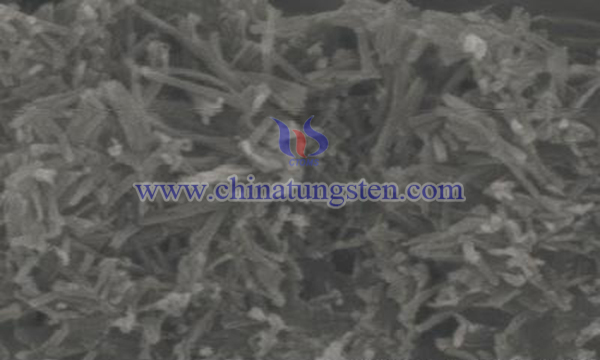
Nano WO3 has a strong absorption capacity for electromagnetic wave. It can be used as an excellent absorption material in the utilization of solar energy and an important invisible material in the military. It also has a huge specific surface area and remarkable surface effect. It has been widely used in fuel cells, chemical sensors, optoelectronic devices and other fields.
One Step Hydrothermal Preparation of Tungsten Trioxide Powder
- Details
- Category: Tungsten Information
- Published on Sunday, 10 November 2019 23:36
- Hits: 1898
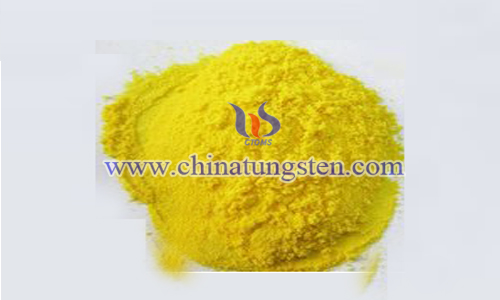
Metal oxides play a key role in the development of many advanced functional materials and smart devices. Among many metal oxides, tungsten trioxide (WO3) is a kind of unique material, which has attracted much attention due to its versatility. For example, WO3 is an n-type semiconductor with various crystal forms, band gap width of 2.5-2.8ev, and visible light response characteristics. Therefore, WO3 can be used as light sensing device, photochromic device, transparent electrode, visible light catalyst, etc.
Tungsten Oxide Nanowires Preparation by Low Temperature Hydrothermal Method
- Details
- Category: Tungsten Information
- Published on Sunday, 10 November 2019 22:27
- Hits: 1857
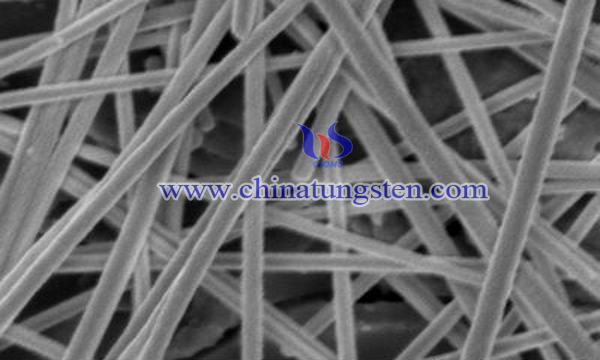
Tungsten oxide is a typical transition metal oxide with a band gap of 2.4-2.8ev, which belongs to a typical n-type semiconductor. In addition to catalysis, electrochromism, battery electrode, solar energy absorbing material and invisible material, tungsten oxide also has the properties of semiconductor functional materials such as pressure sensitive, thermal sensitive and gas sensitive.
Nano Tungsten Trioxide Preparation by Sol-gel Method
- Details
- Category: Tungsten Information
- Published on Sunday, 10 November 2019 22:21
- Hits: 1730
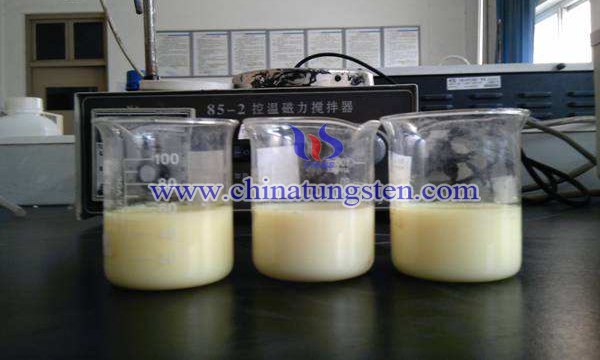
The preparation of core-shell nanocomposites is mainly divided into several methods, such as interface polymerization, condensed phase separation, drying bath and sol-gel method.
Cadmium Sulfide -- Tungsten Trioxide Composite Photocatalyst
- Details
- Category: Tungsten Information
- Published on Saturday, 09 November 2019 23:26
- Hits: 1873
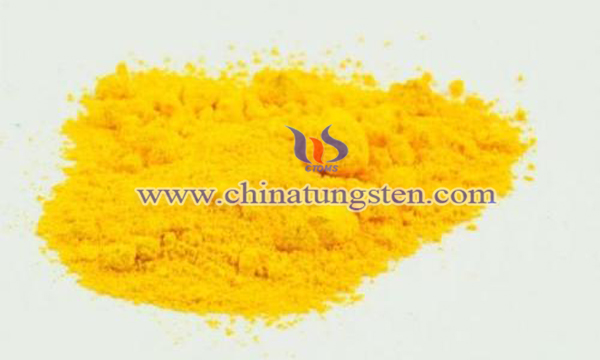
Cadmium sulfide nanocrystals are the most widely studied and the most promising class of II-VI semiconductor nanocrystals. Due to their important nonlinear optical properties, luminescent properties and other physical and chemical properties, they have attracted worldwide attention. As a very important semiconductor material, it has been widely used in many fields, such as various light-emitting devices, laser and infrared detection devices, infrared windows and nonlinear optical materials and photosensitive sensors. Especially cadmium sulfide can absorb visible light very well, so it is the first choice material of photocatalyst.
Tungsten Oxide - Vanadium Oxide Heterojunction Nanowires Preparation by Gas Phase Method
- Details
- Category: Tungsten Information
- Published on Saturday, 09 November 2019 23:16
- Hits: 2285

In order to obtain a gas sensitive detector with high selectivity, high sensitivity, low working temperature and high stability, gas sensitive properties are mainly improved by modifying gas sensitive materials Tungsten oxide with one-dimensional nanowire structure attracts many researchers because of its huge specific surface area. In the aspect of gas sensing material modification, the main ways are doping noble metal Pt, Au, PD or transition metal oxide, in addition, it can be modified by constructing heterostructure. Compared with the two, the cost of heterostructure modification is relatively low.
Core-shell Tungsten Oxide Copper Oxide Heterojunction Nanowires
- Details
- Category: Tungsten Information
- Published on Saturday, 09 November 2019 23:11
- Hits: 1798
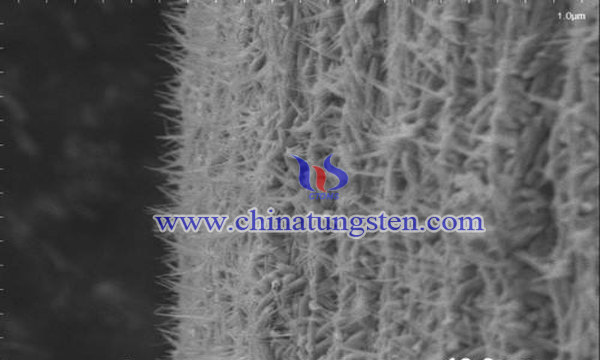
Nano materials show a series of unique properties in micro scale, such as surface effect, quantum effect, small size effect, quantum tunneling effect and so on. Under the influence of these properties, nano materials, especially one-dimensional nano materials, show outstanding specific surface area, adsorption and desorption performance, which contributes to the development of one-dimensional materials.
Electrochromic Films of Nanocrystalline Doped Tungsten Oxide
- Details
- Category: Tungsten Information
- Published on Saturday, 09 November 2019 22:53
- Hits: 1860

Tungsten oxide film has important application value in display field because of its excellent electrochromic characteristics. It can effectively improve its electrochromic performance by doping a proper amount of FTO (fluorine doped tin oxide) nanocrystals. The display device prepared by the film has the characteristics of no blind angle, high contrast, low energy consumption, and can be used as electronic paper, indicator board, etc.
Iron Doped Tungsten Trioxide Photocatalyst Preparation by Electrochemical Deposition
- Details
- Category: Tungsten Information
- Published on Saturday, 09 November 2019 22:47
- Hits: 1865
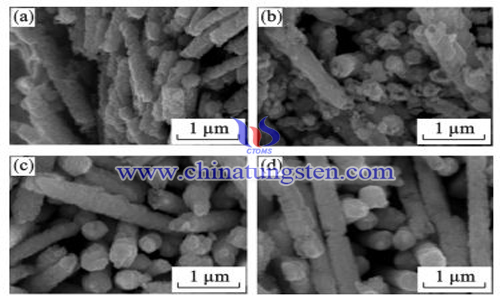
In 1972, Honda and Fujishima successfully used n-TiO2 electrode to produce hydrogen from water by photolysis of solar energy, which made people realize the application prospect of Photoelectrochemical conversion of solar energy to electric energy and chemical energy. At the same time, this technology is applied to solve the problem of dye wastewater and other industrial wastewater.



 sales@chinatungsten.com
sales@chinatungsten.com